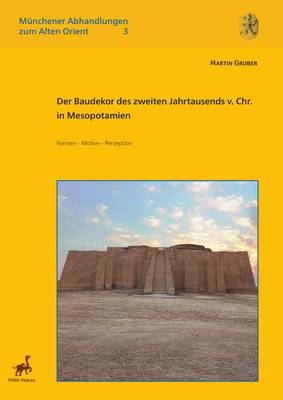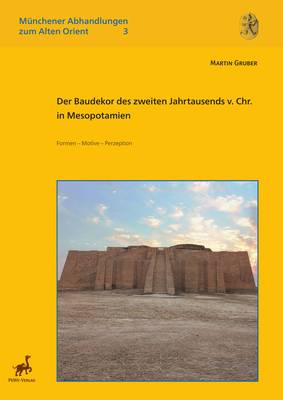
- Afhalen na 1 uur in een winkel met voorraad
- Gratis thuislevering in België vanaf € 30
- Ruim aanbod met 7 miljoen producten
- Afhalen na 1 uur in een winkel met voorraad
- Gratis thuislevering in België vanaf € 30
- Ruim aanbod met 7 miljoen producten
Zoeken
Der Baudekor Des Zweiten Jahrtausends V. Chr. in Mesopotamien. Formen - Motive - Perzeption
Martin Gruber
Hardcover | Duits
€ 133,95
+ 267 punten
Omschrijving
This study deals with the archaeological examples of architectural ornamentation in 2nd-millennium Mesopotamia. Diverse contemporary sources have been consulted in the attempt to elucidate the differing aspects of this form of expression by architecture. The emphasis is on sacred buildings as, by abundant examples, they are shown to be the preferred - and often only - carriers of those forms of architectural ornamentation that are here treated. Besides the monumentality of construction the ornaments at the outer as well as at the courtyard facades of temples in the Ancient Near East are among the most obvious architectural formalisms that mark the sacred space off from other buildings in town. The ostentatious morphology of sacred buildings underlines the architectural differentiation between temples, dwelling-houses and palaces, a differentiation which is far from emerging as clear-cut in the usage of the respective ancient languages. The sacred buildings tend to be carefully looked after throughout centuries, thus forming an important architectural landmark within a changeful urban environment - in contrast to more short-lived palaces and other profane buildings. In this way, sacred architecture becomes a meaningful and long-lasting reference point for the inhabitants' orientation; sacred architecture is more than the lifeless background of a society, it is rather an active guiding system whose communicative potential has not ceased to exist, not even after millennia.
Specificaties
Betrokkenen
- Auteur(s):
- Uitgeverij:
Inhoud
- Aantal bladzijden:
- 384
- Taal:
- Duits
Eigenschappen
- Productcode (EAN):
- 9783935012355
- Verschijningsdatum:
- 1/07/2019
- Uitvoering:
- Hardcover
- Formaat:
- Genaaid
- Gewicht:
- 353 g

Alleen bij Standaard Boekhandel
+ 267 punten op je klantenkaart van Standaard Boekhandel
Beoordelingen
We publiceren alleen reviews die voldoen aan de voorwaarden voor reviews. Bekijk onze voorwaarden voor reviews.








